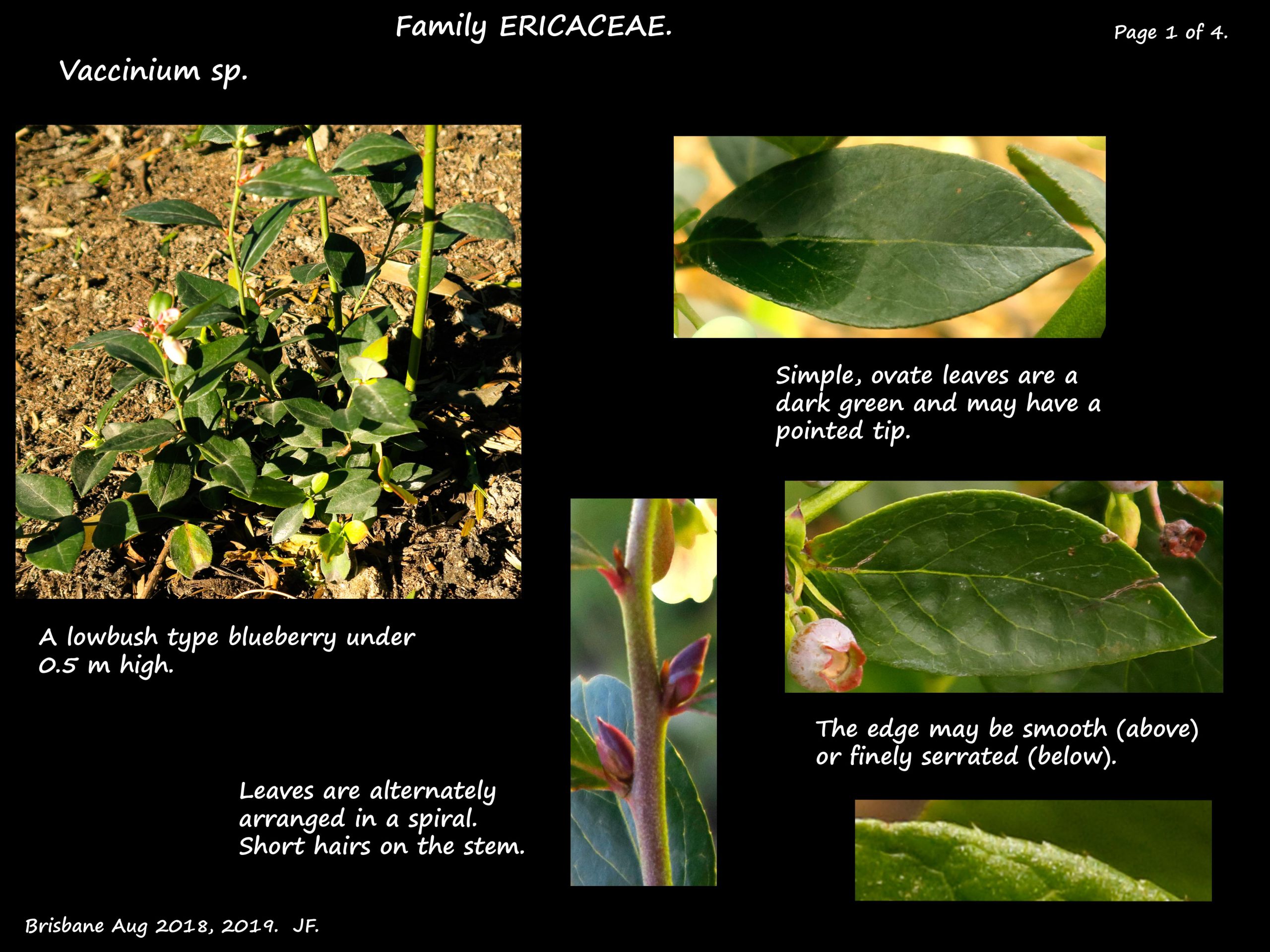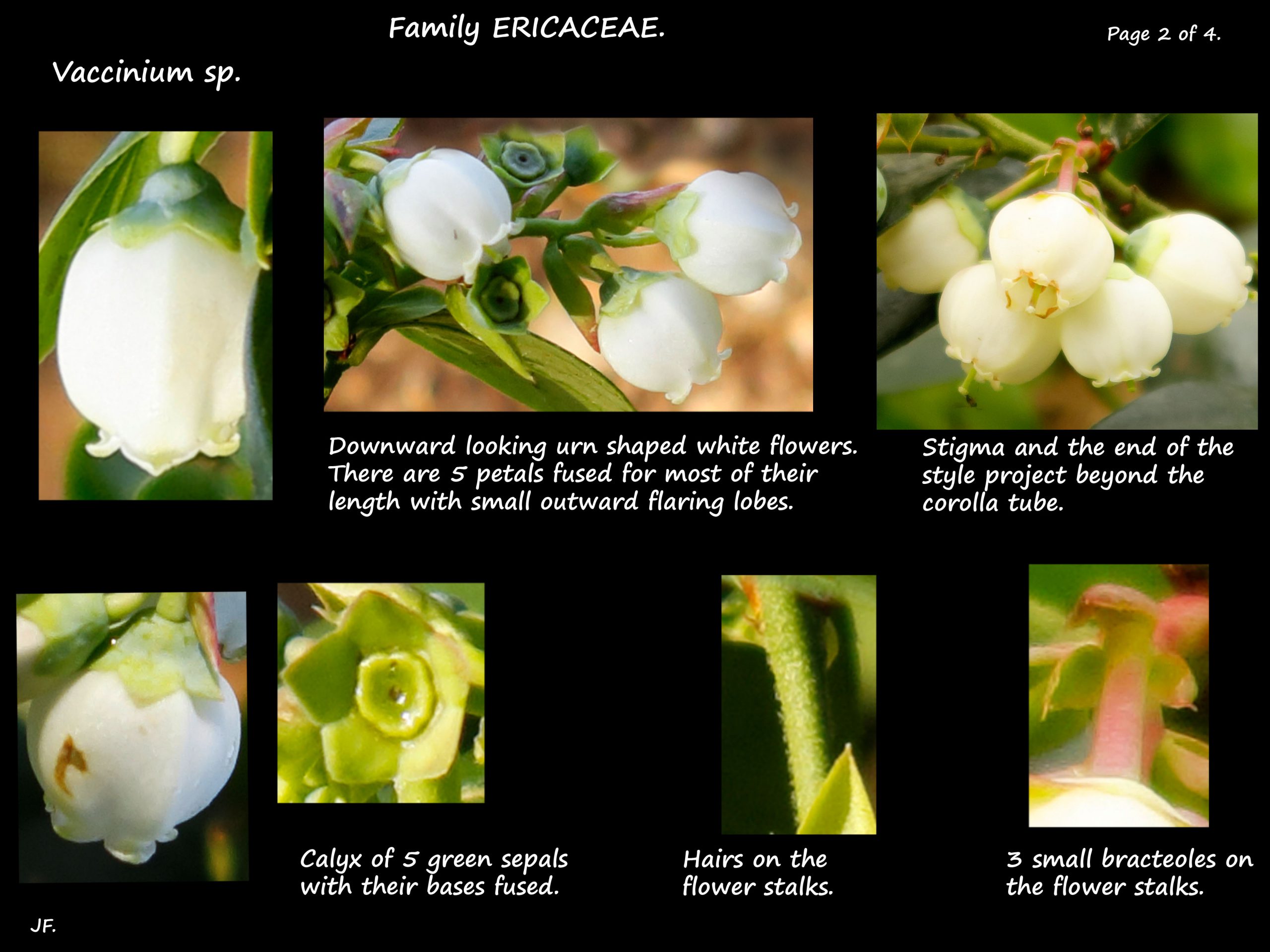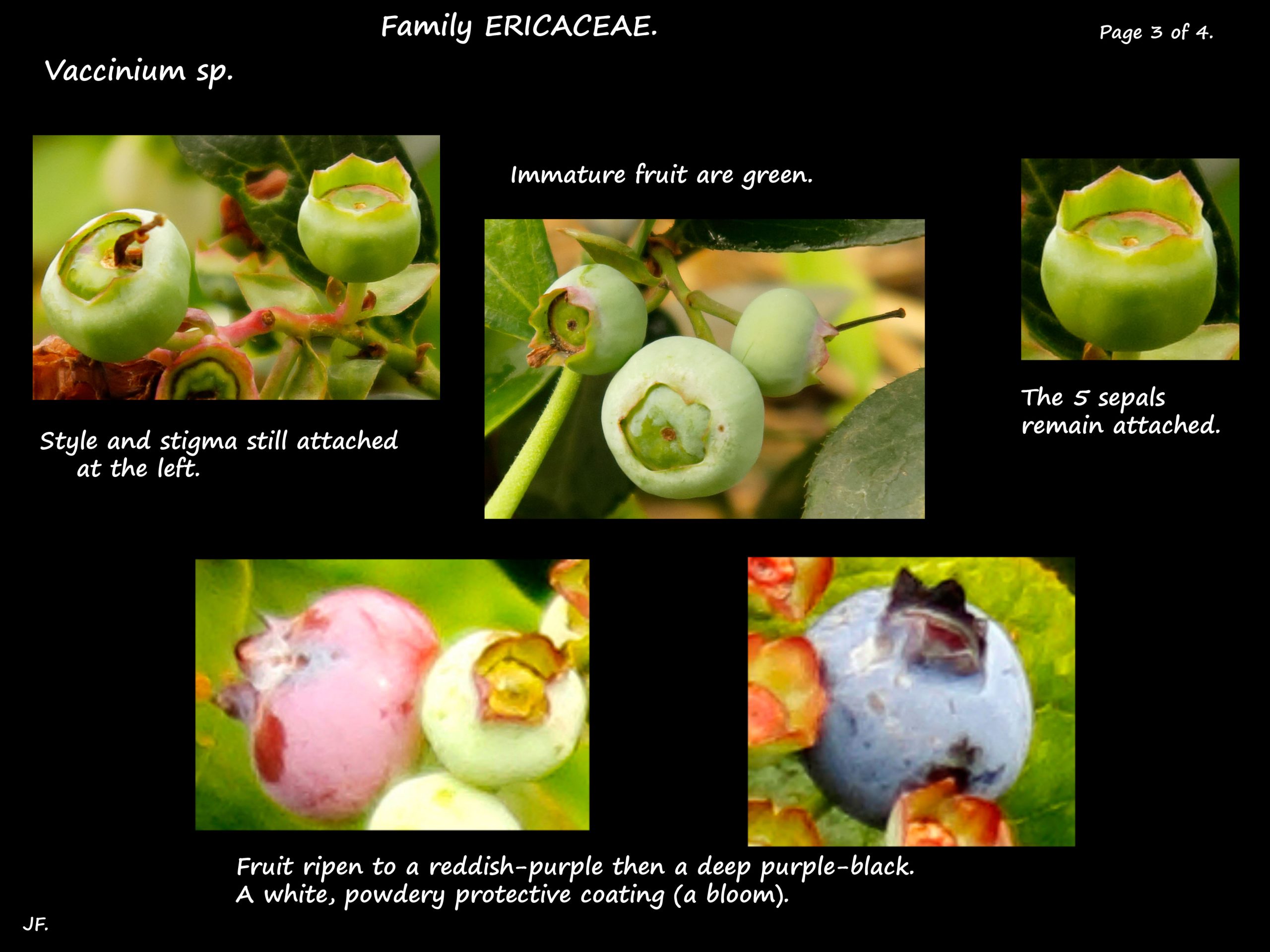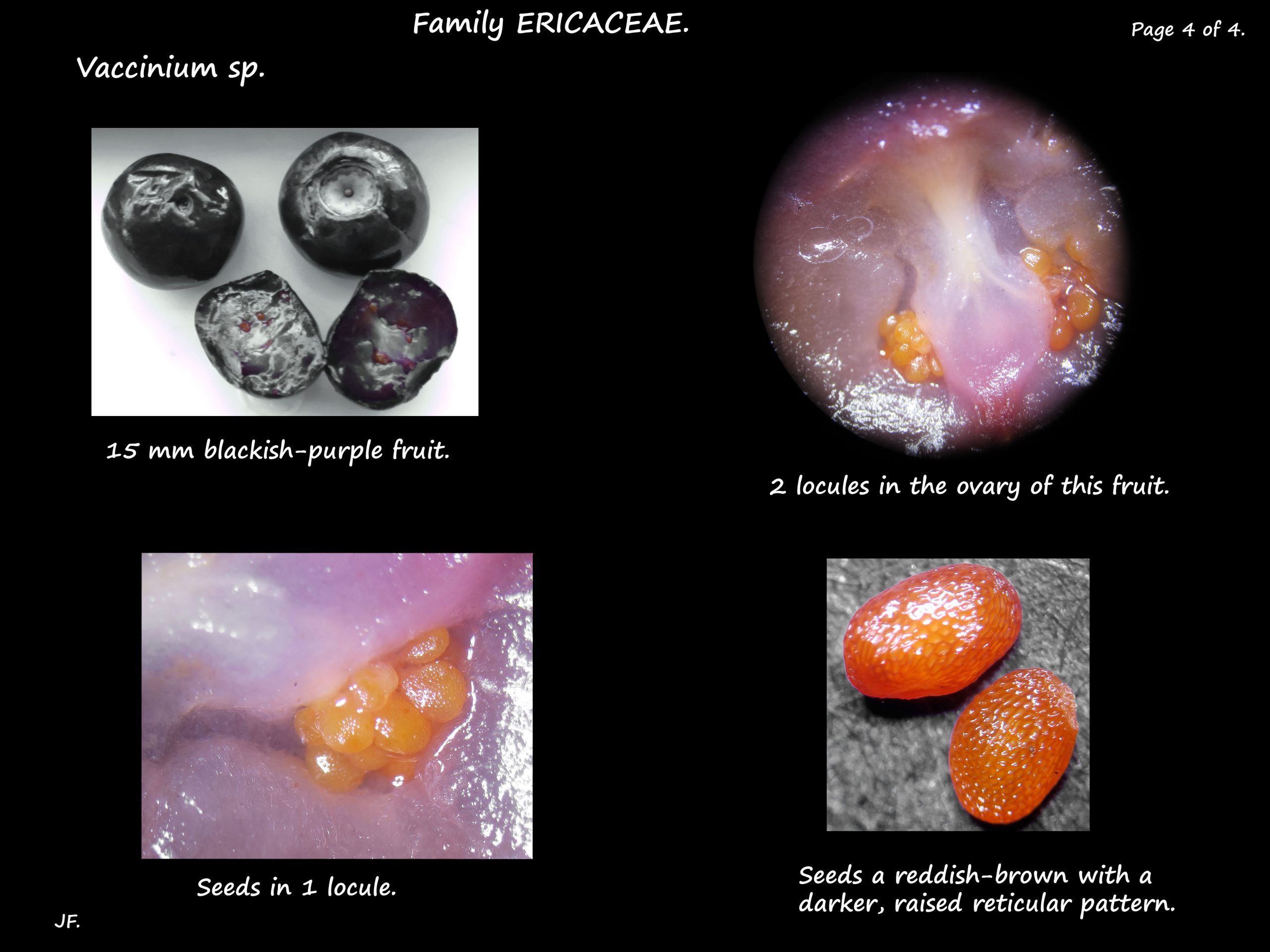Vaccinium – Blueberries.
Family Ericaceae > Subfamily Vaccinioideae > Tribe Vaccinieae.
There are about 450 species that include the blueberries and cranberries.
Plants can be small or large shrubs or small trees from 10 cm to a few metres high.
They can be evergreen or deciduous.
The ovate to lanceolate leaves are from 1 to 8 cm long and 0.5 to 3.5 cm wide.
The edges can be smooth or serrated and the tips are often pointed.
Inflorescences are solitary flowers or small clusters.
The bell or urn-shaped flowers face downwards.
They are mostly white or pale pink but sometimes red.
The ovary is inferior.
The fruit are 5 to 15 mm wide berries with a powdery white coating.
They ripen from green to blue or purple.
The sepals remain attached.
The paler flesh remains semi-transparent.
Commercial blueberries are divided into 3 main groups:
- Highbush blueberries are Vaccinium corymbosum.
- Lowbush blueberries, known as Wild, are Vaccinium augustifolium.
- Rabbit-eye blueberries are Vaccinium virgatum (syn. V. ashei).
There are many other naturally occuring species plus a lot of hybrids, cultivars and varieties.
Australia has been producing commercial blueberries since 1974 – northern highbush in
colder areas and southerh highbush and rabbit eye in warmer areas.
Vaccinium Corymbosum.
Height from 1 to 2 m.
Lance shaped leaves are deciduous turning orange before they fall.
The white flowers may have a red tint.
Blue-black fruit.
Vaccinium virgatum (V. ashei).
From 1 to 4.5 m high.
Leaves are broad with serrated edges.
Flowers are white to pale red.
The 12 mm fruit are purple-black.
J.F.





